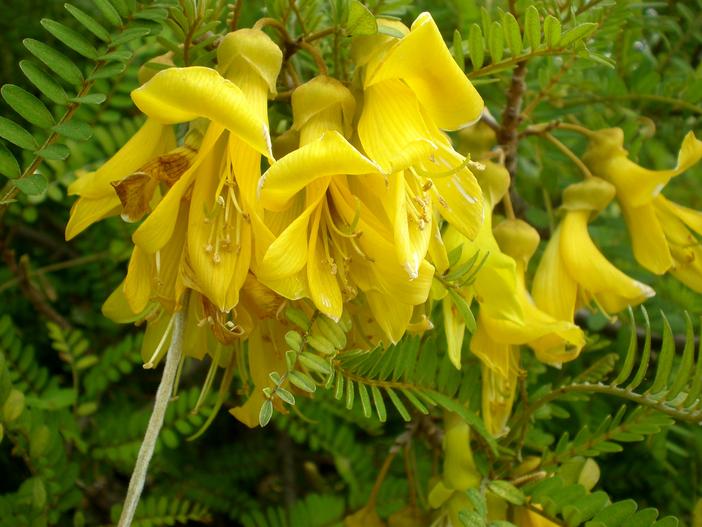Toromiro
(Sophora toromiro)
Toromiro (Sophora toromiro)
/
/

Consultaplantas
CC BY-SA 4.0
Image By:
Consultaplantas
Recorded By:
Copyright:
CC BY-SA 4.0
Copyright Notice:
Photo by: Consultaplantas | License Type: CC BY-SA 4.0 | License URL: https://creativecommons.org/licenses/by-sa/4.0 | Uploader: Consultaplantas | Publisher: Wikipedia Commons



















Estimated Native Range
Summary
Sophora toromiro, commonly known as Toromiro, is a small, now-extinct-in-the-wild deciduous tree that was endemic to the subtropical forests of Easter Island. It was a key component of the island’s forest ecology before deforestation led to its extinction in the wild by the 1960s. The Toromiro tree typically grew to a height of 5-10 meters, with a spreading canopy that produced small, yellow, pea-like flowers followed by seed pods. The wood was historically significant to the Rapa Nui culture, and although local tradition claims the rongorongo tablets were made from Toromiro, they were actually made from Thespesia populnea.
The Toromiro tree is valued for its cultural significance and potential for reforestation projects. It is suitable for cultivation in areas with well-drained soil and full sun to part shade light conditions. The tree’s reintroduction efforts are ongoing, with the Royal Botanic Gardens, Kew, and the Gothenburg Botanical Garden working to propagate plants from seeds collected by Thor Heyerdahl in the 1960s. While the tree is not currently used in mainstream cultivation due to its rarity, it holds potential as a conservation specimen in botanical gardens and for educational purposes. The Toromiro tree does not have any known significant disease problems, but its limited genetic diversity due to the small number of seeds could pose challenges for its reintroduction.CC BY-SA 4.0
The Toromiro tree is valued for its cultural significance and potential for reforestation projects. It is suitable for cultivation in areas with well-drained soil and full sun to part shade light conditions. The tree’s reintroduction efforts are ongoing, with the Royal Botanic Gardens, Kew, and the Gothenburg Botanical Garden working to propagate plants from seeds collected by Thor Heyerdahl in the 1960s. While the tree is not currently used in mainstream cultivation due to its rarity, it holds potential as a conservation specimen in botanical gardens and for educational purposes. The Toromiro tree does not have any known significant disease problems, but its limited genetic diversity due to the small number of seeds could pose challenges for its reintroduction.CC BY-SA 4.0
Plant Description
- Plant Type: Tree, Shrub
- Height: 3-10 feet
- Width: 3-10 feet
- Growth Rate: Moderate
- Flower Color: Yellow
- Flowering Season: Summer
- Leaf Retention: Evergreen
Growth Requirements
- Sun: Full Sun, Part Shade
- Water: Medium
- Drainage: Medium, Fast
Common Uses
Low Maintenance, Potted Plant, Showy Flowers
Natural Habitat
Subtropical forests of Easter Island
Other Names
Common Names: Easter Island Tree
Scientific Names: , Sophora toromiro, Edwardsia toromiro,
GBIF Accepted Name: